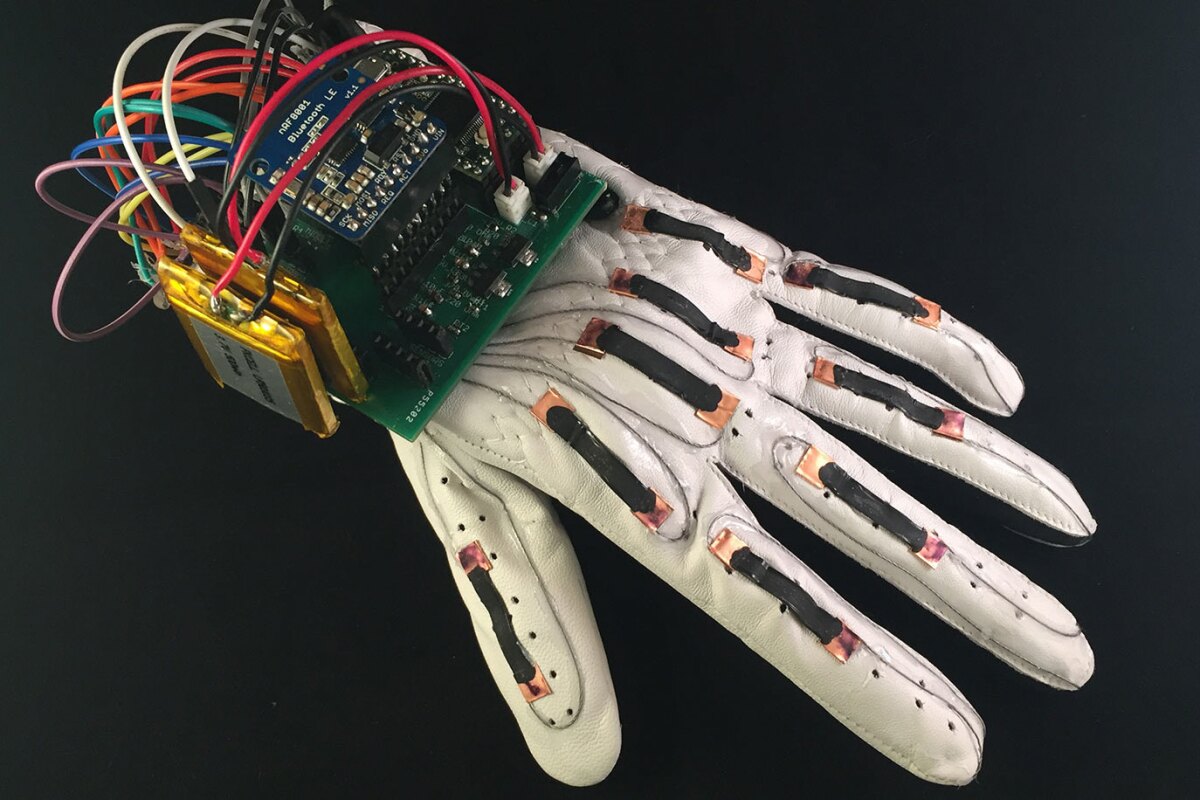Unless you're hard of hearing, or have hearing-impaired friends or relatives, you probably won't understand sign language, which is frustrating for those who rely on it to communicate. Now engineers at the University of California San Diego have developed a prototype of what they call "The Language of Glove," a Bluetooth-enabled, sensor-packed glove that reads the sign language hand gestures and translates them into text.
This isn't the first device designed to break down this particular language barrier. The 2012 Microsoft Imagine Cup was taken out by the EnableTalk gloves, which translate gestures into speech, and a London team developed a similar system a few years later called the SignLanguageGlove. Uni, meanwhile, is a tablet-like solution that uses infrared motion tracking to convert gestures to speech and text.
The Language of Glove uses a similar tracking method to the other glove-based systems. Nine stretchable sensors are attached to the knuckles of a leather athletic glove, two on each finger and one on the thumb. These are connected to a circuit board on the wrist, which generates a letter of the American Sign Language alphabet based on the position of the fingers.
The code works off a binary system. The sensors are designed to change their electrical resistance when they're bent or stretched, so when a finger is straight, the device registers a 0 input, while a bent finger sends a signal of 1. The system combines these signals from all nine sensors to generate a nine-digit code, which corresponds with a particular letter. For example, in sign language the letter A is made by keeping the thumb straight while bending all fingers, so the code is 011111111. To differentiate between similar gestures, the glove is also equipped with an accelerometer and pressure sensor.
The circuit board then translates these codes into a string of written letters, and sends them via Bluetooth to be displayed on a smartphone or computer screen. To keep the system accessible, the team created the Language of Glove using inexpensive materials and fabrication methods, and in future, the design could be used to control virtual or robotic hands, for entertainment or medical or military training.
"Gesture recognition is just one demonstration of this glove's capabilities," says Timothy O'Connor, first author of the Language of Glove study. "Our ultimate goal is to make this a smart glove that in the future will allow people to use their hands in virtual reality, which is much more intuitive than using a joystick and other existing controllers. This could be better for games and entertainment, but more importantly for virtual training procedures in medicine, for example, where it would be advantageous to actually simulate the use of one's hands."
The study was published in the journal PLOS ONE, and the Language of Glove can be seen in action in the video below.
Source: UCSD




